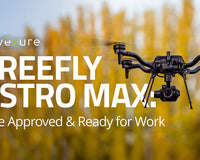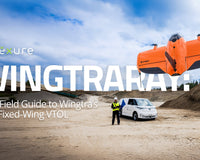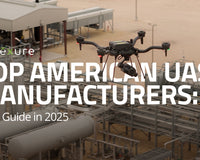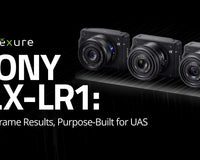In honor of National Public Safety Telecommunicators Week (NPSTW), we’re spotlighting how Drone as First Responder (DFR) programs are reshaping public safety dispatch workflows—and elevating the role of dispatchers and Real-Time Crime Centers (RTCCs) in modern policing.
When a 911 call is received, telecommunicators and RTCC staff are often working with incomplete or secondhand information. That challenge changes with DFR: drones launched immediately upon call receipt provide real-time, high-fidelity aerial intelligence before officers even arrive. This allows dispatchers to verify calls, assess threat levels, deconflict information, and direct limited resources more strategically.
This blog takes a technical deep dive into how public safety agencies are integrating DFR into dispatch operations, the benefits to telecommunicators and command staff, and what departments need to consider from a workflow, regulatory, and hardware/software perspective.
Dispatch as the Operational Nerve Center of DFR
In the most mature DFR programs across the U.S., dispatchers or RTCC personnel are no longer just relaying information between callers and field units—they are actively piloting drones, interpreting live video feeds, and making informed deployment decisions in real time.
Dispatch-Driven Drone Deployment
In departments like Chula Vista PD (CA), Brookhaven PD (GA), and Montgomery County (TX), trained dispatchers or RTCC analysts serve as remote pilots-in-command (RPICs) or teleoperators. Using CAD alerts, Live911 audio, or sensor integrations (e.g., ShotSpotter, LPR hits), they rapidly deploy drones to scene locations—often within seconds of receiving an incident location.
Through tight integration with CAD and software platforms like DroneSense or VOTIX, a dispatcher can:
-
Instantly identify the nearest available drone
-
Launch it to GPS coordinates associated with a 911 call
-
Control the gimbal and zoom functions in flight
-
Stream live footage to responding officers, command staff, or external agencies
Example: Chula Vista PD’s Teleoperator Workflow
At Chula Vista PD, teleoperators monitor both CAD and Live911 feeds. If a dispatcher hears suspicious caller behavior or identifies a priority call—such as an in-progress burglary—they can launch a Matrice 30T from one of the department’s rooftop DJI Dock stations. The drone is airborne within 30 seconds, arriving on scene in 2–3 minutes. The dispatcher then uses the zoom camera to assess the scene and guide responding units based on what they see, such as confirming suspect activity, identifying exits, or directing resources away from false alarms.
Enhancing Situational Awareness and Decision-Making
Real-Time Aerial Video as a Force Multiplier
Once airborne, DFR drones provide high-resolution live video feeds with optical and thermal overlays. These feeds are streamed directly to dispatch consoles, in-vehicle MDTs, mobile devices, and RTCC video walls. This shared situational awareness (SSA) bridges critical knowledge gaps in the first 3–5 minutes of an incident.
Instead of relying solely on verbal descriptions, dispatchers and field units can:
-
Confirm presence of suspects or weapons
-
Observe behavioral cues or signs of duress
-
Track fleeing individuals or vehicles
-
Assess false alarms before committing resources
Tactical Impact on Officer Safety and Response Strategy
By validating threats and confirming details in advance, dispatchers can recalibrate the response:
-
Downgrade calls from Code 3 to Code 2 when no visible threat is present
-
Cancel response altogether if a situation has resolved prior to arrival
-
Provide visual overwatch during high-risk stops or warrant services
-
Support real-time perimeter management using aerial perspectives
For example, Chula Vista PD reports that over 4,000 incidents have been resolved by drone without a ground response, allowing officers to redirect to higher-priority calls. In Elizabeth, NJ, over 25% of drone deployments resulted in call closure prior to officer arrival.
System Integration: How DFR Merges with Dispatch Technology
Computer-Aided Dispatch (CAD)
Advanced DFR programs integrate drone tasking directly into CAD workflows. Dispatchers can generate a drone dispatch unit the same way they would assign patrol or K9 units. Integration ensures:
-
Location data and call type are immediately passed to drone command software
-
Drone telemetry and status (e.g., en route, on scene, RTH) appear in the CAD interface
-
Dispatchers maintain continuity across voice, data, and video communication
Some platforms, such as Fūsus or DroneSense, integrate with Motorola, Hexagon, and CentralSquare CAD systems to create a seamless operator experience.
Live911 and Audio Fusion
Live911, used in Chula Vista and other early adopters, streams live 911 call audio and caller GPS directly to drone pilots. This allows dispatchers to launch a drone even before the CAD entry is completed. The system accelerates decision-making and enables proactive deployment based on live caller tone, background noise, or verbal cues.
RTCC and Evidence Management Integration
Drone video feeds can be layered into RTCC dashboards alongside:
-
Fixed traffic or CCTV cameras
-
ALPR systems
-
Body-worn camera streams
Regulatory Considerations: FAA Compliance for Dispatch-Controlled Drones
Beyond Visual Line of Sight (BVLOS) Operations
Most DFR programs operate under FAA-issued Certificate of Authorization (COA), or Part 107 waivers, that allow for BVLOS flights within a defined area. Dispatchers acting as RPICs must ensure:
-
FAA compliance with active waivers
-
Airspace coordination with any nearby airports or Class B/C/D airspace
-
Visual observer (VO) protocols (or tech mitigation alternatives if approved)
Chula Vista, Elizabeth, and Brookhaven all operate under BVLOS waivers tied to defined operational volumes (e.g., city boundaries or a 3-mile radius around drone dock sites).
Pilot Certification and Dispatcher Training
Dispatchers or RTCC operators flying drones must hold a valid FAA Part 107 Remote Pilot Certificate. Agencies should supplement this with:
-
Scenario-based training specific to DFR mission types
-
Simulations that mimic high-risk deployments
-
Familiarity with drone UI, telemetry, geofencing, and fail-safe features
-
SOPs for prioritization, mission aborts, and coordination with ground units
Case Studies: How Dispatch-Driven DFR Works in the Field
Chula Vista Police Department (California)
-
Program Start: 2018
-
Teleoperator Role: Sworn officers and trained dispatch staff co-manage DFR deployments
-
Key Stats: Over 20,000 missions; average drone response time of 94 seconds
-
Integration: Live911, DJI Dock + Matrice 30T, DroneSense, CAD
Impact on Dispatch: Drones often arrive 2–4 minutes ahead of patrol units. Dispatchers verify whether a threat exists and downgrade/cancel calls when false alarms are confirmed. In one case, a "man with a gun" call was visually confirmed to be a novelty lighter, preventing a high-risk stop.
Brookhaven Police Department (Georgia)
-
Program Start: 2020
-
Average Drone Response Time: 70 seconds
-
System: DJI platforms, RTCC overlay, Fūsus integration, multi-drone coverage
Dispatch Contribution: Dispatchers identify calls involving in-progress incidents, property crimes, or alarms and initiate drone response via CAD. In one incident, a drone intercepted a suspect vehicle tied to a violent robbery before ground units, providing a tactical feed during the arrest.
Elizabeth Police Department (New Jersey)
-
Program Start: 2022
-
Results (First 6 months): 1,390 drone responses, 25% call clearance by drone alone
-
Unique Challenges: Operating in Class B airspace near Newark; FAA BVLOS waiver with Paladin drone-in-a-box system
Dispatch Relevance: 911 call intake and drone response coordination allows early threat verification and visual overwatch in high-density areas. Community feedback has been positive, with civilians noting how quickly a drone arrived following their call.
Drone Platform Recommendations for Dispatch-Centered DFR Programs
When building a DFR capability optimized for dispatcher use, technical specs and integration capabilities are key:
Recommended Features:
-
Automated Launch via Docking Station (e.g., DJI Dock): Enables 24/7 readiness and autonomous takeoff/landing
-
High-Zoom EO Cameras: 20x–30x optical zoom for scene assessment from altitude
-
Dual Sensor Payloads: Optical + thermal for night ops, search-and-rescue, and deconfliction
-
Encrypted Live Streaming: Low-latency video to RTCC, CAD interface, and mobile clients
-
Weather-Resistant Airframes: IP-rated platforms for reliability in urban or coastal climates
-
Long-Range Comms: LTE/5G, mesh networks, or dedicated spectrum for citywide BVLOS
Agencies may work with UAS dealers like Advexure to configure mission-specific payloads, evaluate airspace constraints, or initiate FAA filings for BVLOS waivers.
Strategic Considerations for Command Staff
Commanders and agency leadership planning to integrate DFR into dispatch must weigh:
-
Policy alignment: Establish SOPs defining dispatch authority to launch, command structure, privacy safeguards, and video retention protocols.
-
Shift coverage: Ensure trained RPICs are scheduled during peak demand hours. Some agencies cross-train dispatchers and CSOs to maximize uptime.
-
Performance metrics: Monitor drone deployment rates, response deltas, and call clearances. Metrics help justify expansion to city council or funding agencies.
-
Interagency integration: Regional dispatch centers may consider shared DFR coverage or mutual aid agreements with neighboring jurisdictions.
-
Public communications: Transparency about when/why drones are deployed (e.g., published flight logs, outreach during NPSTW) can build community trust.
The Future of Dispatch: Intelligence-Led, Drone-Enabled
As police departments contend with staffing constraints and rising demand for service, DFR represents a scalable way to augment coverage, enhance officer safety, and modernize the dispatcher’s role.
By giving telecommunicators access to a real-time aerial perspective, agencies reduce time-to-information, improve operational tempo, and empower the “first of the first responders” to act more decisively.
In honor of NPSTW, it’s clear that public safety dispatchers are not only call-takers—they are becoming drone operators, intelligence coordinators, and tactical advisors. The future of emergency response isn’t just boots on the ground. It’s also drones in the sky—and dispatchers at the helm.
References
- FAA BVLOS Fact Sheet
-
DroneSense Software Overview
- Fūsus Real-Time Crime Center Technology
- Live911 Overview by HigherGround










